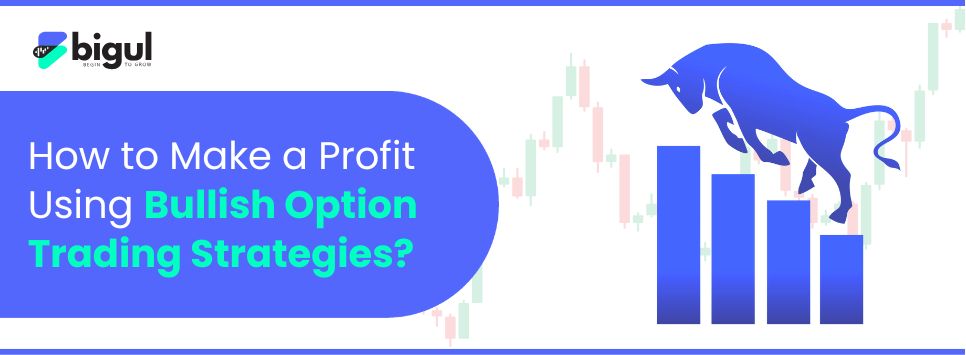What is Option Trading?
If you are a beginner and trading in the stock market, you often wonder what option trading is. It’s basically a way to profit from the movement of stock price or Index price by buying or selling contracts at a set price. For example, an options trading for beginners scenario might be buying a call option on Reliance Industries at Rs. 1,400 if you believe its price will rise. If Reliance climbs to Rs. 1,500 before expiry, that call option becomes valuable and you make a profit. This strategy lets you gain from upward price moves with limited risk (the most you lose is the premium paid).
A Few Things You Need To Know Before Diving Into Options
Calls vs. Puts: It is good to know the basics before proceeding with the strategy. In option puts and calls, you would have a call option to purchase a stock at a set price (in case you think the stock will increase), and a put option to sell a stock at a set price (in case you think the stock will decrease). When the terms put option and call options are used, consider calls as the bullish side and puts as the bearish side.
Some traders even use a call and a put together, which they sometimes call an options call put strategy (like a straddle); but for now, we'll focus on straightforward bullish strategies.
When markets are rising, traders use bullish option trading strategies to capitalize on gains. These strategies let you potentially earn money when stocks like Infosys or TCS climb higher. We will look at five common strategies: buying a call (Long Call), Bull Call Spread, Covered Call, Cash-Secured Put, and Protective Put.
Each one uses calls and puts in different ways to aim for profit. We’ll use real examples with Indian stocks and rupees to illustrate how each option trading strategy works.
Bullish Strategies For The Indian Market
Long Call: This is the simplest bullish strategy. You pay a premium to buy a call option, which gives you the right to buy shares at a strike price. For example, if Reliance is trading at Rs. 1,400, you could buy a Rs. 1,500 strike call option for, say, Rs. 50. This costs you Rs. 50 per share (the premium). If Reliance moves up to Rs. 1,600 by expiry, your call option (which lets you buy at 1,500) is worth at least Rs. 100, so you make a net profit of Rs. 50 per share. The most you risk is the premium paid, and option trading for beginners love this strategy for its simplicity and unlimited upside.
Bull Call Spread: This strategy uses two call options to reduce cost. You buy a call at a lower strike and sell another call at a higher strike. For instance, imagine Infosys is at Rs. 1,400. You buy a Rs. 1,400 call for Rs. 100 and sell a Rs. 1,500 call for Rs. 50. Net, you pay Rs. 50 in premium. If Infosys rises to Rs. 1,500 by expiry, the 1,400 call is worth Rs. 100 and the 1,500 call expires worthless, giving you Rs. 50 profit (Rs. 100 value minus Rs. 50 cost). This caps both your profit and loss but is a popular option trading strategy to boost gains when the stock rises moderately.
Covered Call: If you have shares of a company, then you can sell a call on the stock to earn.For example, you hold 100 shares of TCS at Rs. 3,000. You sell a Rs. 3,200 strike call and collect about Rs. 60 per share in premium (Rs. 6,000 total). If TCS stays below Rs. 3,200 by expiry, you keep the premium and still own your shares. If TCS rises above Rs. 3,200, you must sell your shares at that price, but you still keep the premium. This option trading strategy gives you income in a rising market, though it limits extra gains beyond the strike.
Cash-Secured Put: This strategy is selling a put option on stock while having enough cash to buy the stocks later. For example, if Infosys trades at Rs. 1,400 and you believe it won’t drop below Rs. 1,300, you could sell the Rs. 1,300 put option for Rs. 40 premium. If Infosys stays above Rs. 1,300 by expiry, you keep the Rs. 40 per share premium as profit. If Infosys falls to Rs. 1,200, you must buy 100 shares at Rs. 1,300 (using your cash), but your effective cost is Rs. 1,260 (Rs. 1,300 strike minus Rs. 40 premium).
Protective Put: If you have a stock and you think it will drop then you should buy a Put for the insurance.For example, say you own 100 shares of Reliance at Rs. 1,400. You buy a Rs. 1,300 put for Rs. 30. If Reliance stays above Rs. 1,300, you lose the Rs. 30 premium but still profit from any higher stock price. If Reliance crashes to Rs. 1,200, you can sell at Rs. 1,300 using the put, capping your loss. Protective puts cost a premium but give peace of mind, letting you stay bullish in trading in stock market with limited downside.
How To Use Charts And Indicators To Trade In Options?
Many beginners look at an option trading chart of the underlying stock when planning trades. For example, if an Infosys share chart shows a steady uptrend or a bullish pattern, that supports a bullish strategy like buying calls. Traders often add technical tools too. For instance, the RSI (Relative Strength Index) is sometimes considered a best indicator for option trading, highlighting overbought or oversold levels. MACD or moving averages on the chart are also popular. While charts and indicators help, remember that option trading still carries risk. Always combine chart analysis with a good trading plan and patience.
What is Time Decay & Volatility In Options?
All options lose value as time passes (this is called theta or time decay). For a beginner, this means even a rising stock needs to move enough to cover the option’s daily loss. For example, buying a call for Rs. 50 may lose Rs. 1 per day if the stock barely moves. Spread strategies (like our bull call spread) help by lowering cost, so time decay hurts less.
The premiums on options will soar ahead of any major news and tend to drop afterwards. The increased volatility increases the premiums and once it declines, the options will be out of value irrespective of the stability of the stock. These strategies are the possible assessments of option trading based on time decay and volatility that can assist you in being more successful. In fact, the last week before a monthly expiry has especially fast decay, so beginners often avoid holding options too long.
A Few Tips for Beginners
Option trading can be exciting, but it’s important to start small and stay disciplined. Paper trade or use a demo to practice before risking real money. Focus on one strategy at a time and understand its payoff and risk. Use stop-losses or defined budgets so you never lose more than planned. For example, use a virtual trading simulator or small lots to try these ideas as an option trading for beginners without big risk. Keep an eye on the news for your chosen stocks (like Reliance or Infosys), as big events can move the market. There is no single best indicator for option trading, so learn a few (like RSI or volume) and see which fits your style.
For example, always review setups on an option trading chart of your preferred timeframe. Practice reading options, puts, and calls data to gauge market mood. As you progress, you might try advanced ideas: an options call put strategy (a straddle) can profit from big swings, but it’s riskier. Always remember what each put option and call option does before using these tools.
Even if it feels repetitive, feel free to reread this option trading for beginners guide as many times as you need. Also, when you hear the phrase options call put, think of it simply as a combo of calls and puts. It's not magic, just combining a call and a put in one strategy. You should also know that a put option and call option are just the two fundamental option types, which makes everything clearer.
Finally, aim for consistent small gains rather than gambling. Remember: a steady small profit is better than a risky big gamble in option trading. Many professionals target steady 5-10% gains each month consistently rather than betting everything at once.
Key Reminders Before You Start Trading In Options
In option trading for beginners, repetition and practice help mastery in trading in stock market. Always keep learning: ask yourself what is option trading whenever in doubt. Study charts often – an option trading chart for an Indian stock like Reliance can show trends. Remember there is no single best indicator for option trading, so try RSI, MACD or support levels. Pay attention to open interest and options puts and calls volumes for clues.
If someone mentions options call put, they mean using both a call and put in one trade (like a straddle). If it still sounds complex, ground yourself in basics: knowing how a put option and call option works is enough to use any strategy wisely. With these reminders, you’ll gain confidence as you practice.
Consider how an option trading chart or even a best indicator for option trading would look for a rising stock. In time, applying these option trading strategies as option trading for beginners will become second nature, as long as you keep asking yourself what is option trading and revisiting the basics.
Keep reinforcing these ideas: even if complex terms like options call put or best indicator for option trading come up, always ground yourself in the basics of what is option trading. Review how each option trading strategy works, since they all use options puts and calls in simple ways.
Remember: each option trading strategy is built on basic calls and puts. Whenever in doubt, ask what is option trading again. Over time, these ideas will help your confidence grow in trading.
FAQ
Q: What is option trading?
A: Option trading is basically buying or selling contracts which gives you right to buy or sell a stock at a set price and allowing you to profit from moves.
Q: What is a put option and call option?
A: A call option gives the right to buy a stock at a certain price, while a put option gives the right to sell a stock at a certain price.
Q: What is an option trading chart?
A: An option trading chart is usually a price chart of the underlying stock, used with indicators to analyze trends and help time your trades.
Q: What is the best indicator for option trading?
A: No indicator can be considered the most helpful. It is known that many traders apply the RSI or MACD onto the chart as an evaluation of momentum; however, success can only be achieved through a combination of tools with market knowledge.
Q: What option trading strategies are suitable for beginners?
A: Beginners should use the simple trading strategies and use the money which they can risk and a very limited amount.

.jpg)






.jpg)
.jpg)
